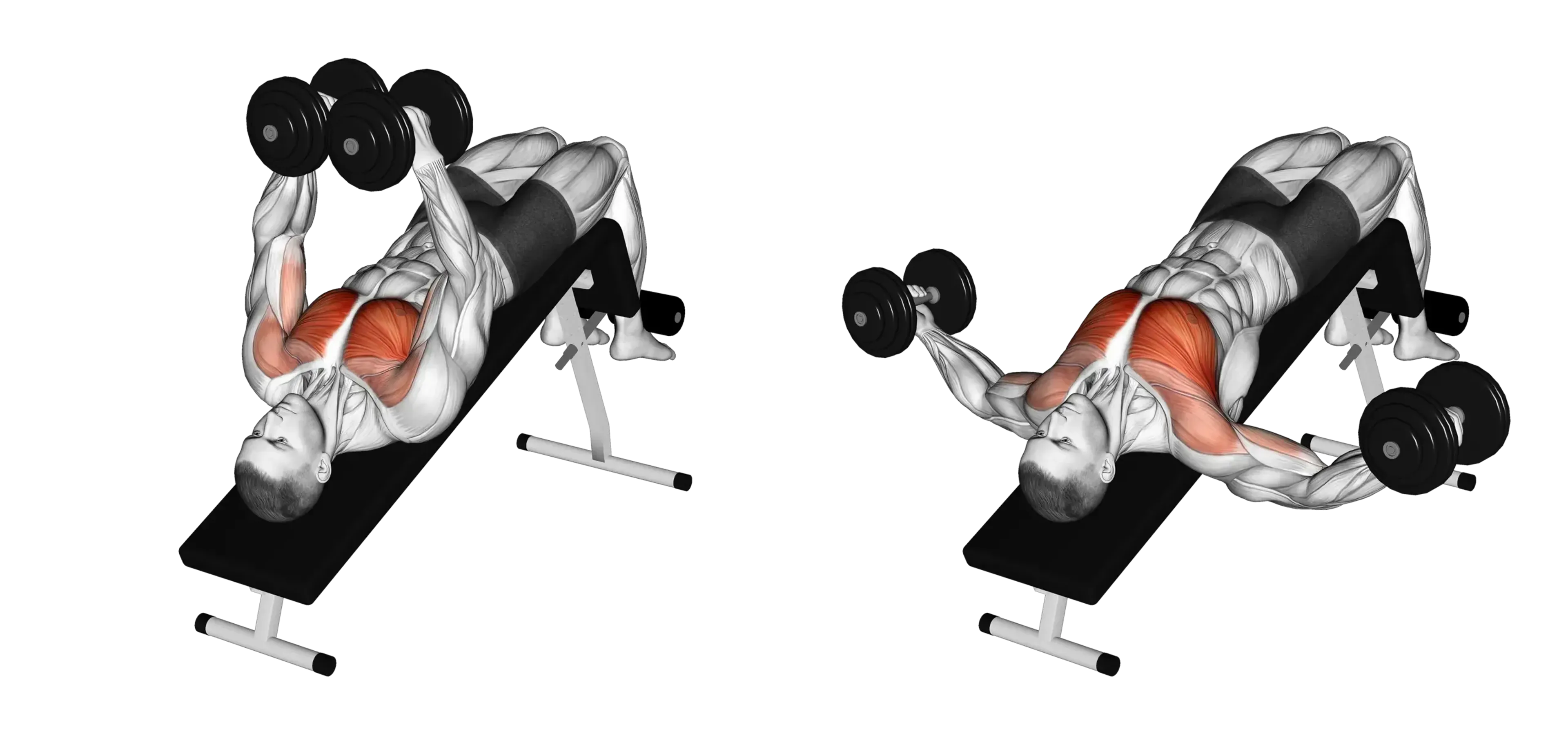Dumbbell Decline Fly

Overview
- Primary Focus:
- Chest.
- Equipment:
- Dumbbell and bench.
- Difficulty:
- Intermediate.
General Information
Dumbbell Decline Fly is an isolation exercise that primarily targets the lower portion of the chest (pectoralis major) and secondarily activates the front shoulders (anterior deltoids) and biceps brachii. It is considered an intermediate-level movement due to the positioning and balance required on the decline bench.
This exercise is a variation of the classic dumbbell fly, performed on a decline bench to shift more emphasis toward the lower chest. The motion involves sweeping the arms in an arc while maintaining a slight bend at the elbows, creating a deep stretch and strong contraction in the pecs.
Dumbbell decline flys are commonly used by lifters looking to enhance chest shape and develop the often-undertrained lower chest region. This movement is especially effective for hypertrophy when performed with light to moderate weight and strict form.
Muscles Worked
- Pectoralis Major
- Primary
- Deltoid
- High
- Serratus Anterior
- Medium
- Biceps Brachii
- Low
- Rectus Abdominis (Lower)
- Low
Instructions
- Set a bench to a decline position (around 30–45 degrees) and lie on it with your head lower than your hips.
- Hold a dumbbell in each hand with a neutral grip (palms facing each other) and extend your arms above your chest, keeping a slight bend in the elbows.
- Slowly lower the dumbbells in a wide arc until they are level with your chest or slightly below, feeling a stretch across your chest.
- Keep your elbows softly bent and avoid letting the arms fall too far back.
- Engage your chest muscles to reverse the motion and bring the dumbbells back to the starting position.
- Pause briefly at the top and repeat for the desired number of repetitions.
Common Mistakes
Injuries
Dumbbell Decline Fly is a low to medium risk exercise when performed with proper form.
The most common issue is shoulder strain, especially if the arms are overextended or the dumbbells drop too low. Keeping a slight bend in the elbows and controlling the range of motion can help reduce shoulder stress.
Lower back discomfort can occur if the bench angle is too steep or if the core is not engaged. Ensure the bench is securely set, and keep your back flat against the pad throughout the movement.
Wrist strain is another possible issue, especially when lifting too heavy or allowing the wrists to bend backward. Keep the wrists neutral and use weights that allow you to maintain full control.
Alternative Exercises

Frequently Asked Questions
- Q: Can I do this exercise without a decline bench?
No, a decline bench is essential for targeting the lower chest in this variation.
- Q: Is the decline fly better than flat flys?
It depends on your goal - decline flys better emphasize the lower chest, while flat flys target the mid-chest.
- Q: How heavy should I go on this exercise?
Use light to moderate weights that allow full control and a strong stretch without compromising form.
Overview
- Primary Focus:
- Chest.
- Equipment:
- Dumbbell and bench.
- Difficulty:
- Intermediate.




